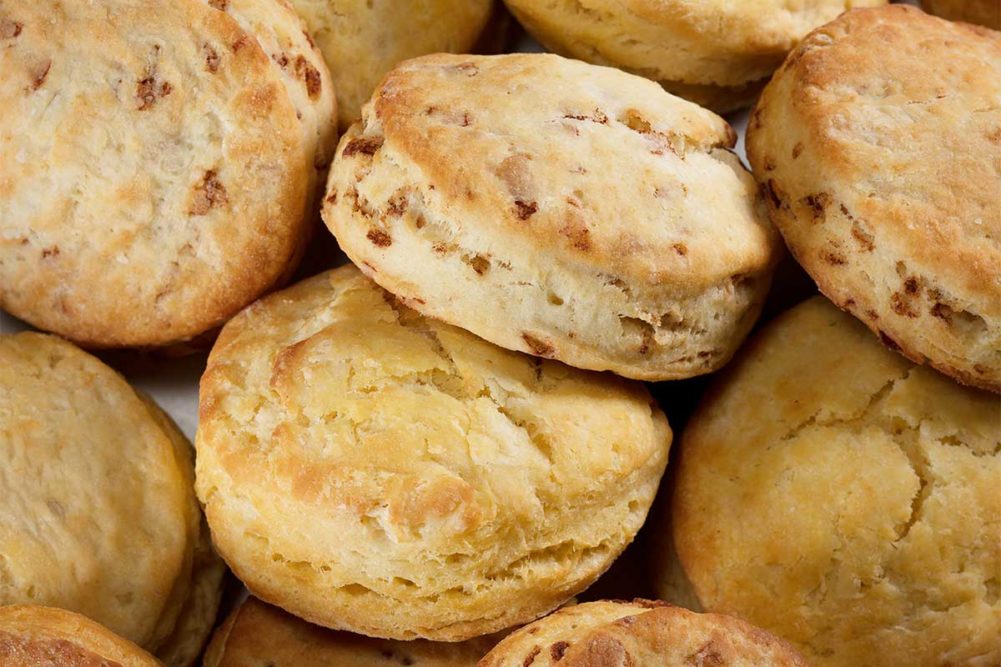One of the many ingredients facing shortages due to crop conditions and the war in Ukraine are fats and oils, specifically high-oleic specialty oils and palm. There are a few ways bakers can alleviate the headaches associated with today’s short supply of high-oleic and palm fats and oils. They can switch to commodity oil-based alternatives, animal-based fats or reformulate to reduce their reliance on high-oleic or palm ingredients without replacing them entirely.
When going the replacement route, the biggest concern bakers have is replicating the same finished product characteristics as the original formulation that included the primary fat or oil solution. This includes texture, flavor, mouthfeel and shelf life. Substitute ingredients should have similar melting behavior and a neutral flavor profile to achieve similar functionality and taste, explained Marie Shen, associate innovation scientist, Kemin Food Technologies.
“Bakers should also be aware of the critical steps in the production process and be on the lookout when swapping to a substitute,” Ms. Shen explained. “In croissant making, for example, the lamination process should not break the dough, and the dough can be sheeted as thin as possible, and the final products should be crunchy with no waxy mouthfeel. Ensuring comparable functionality between substitutes will make or break how successful your end product is.”
While commodity oils definitely provide a road to replacing these alternative oils, they aren’t without some challenges that will need to be addressed if bakers are to maintain those same critical characteristics — most notably, shelf life.
“Conventional liquid oils are less stable and more prone to oxidation and rancidity than high-oleic oils,” said Andrea Weis, scientist II, AAK USA. “When substituting a high-oleic oil with a conventional oil, bakers should ensure that their finished product retains the same quality throughout its shelf life, retaining its typical flavor profile and being free from any off-flavors.”
To resolve this issue, bakers often need to stabilize the oil with other ingredients like antioxidants.
“As the cost of ingredients continues to rise, preserving the freshness and quality of the oils or fats is equally important to finding cheaper substitutes,” Ms. Shen said. “Kemin can help preserve the oils and fats with antioxidants, and the oxidative shelf life of the oils and fats is extending. The fat characteristics can be protected due to protecting triglycerides from oxidation stress.”
Incorporating natural antioxidants like rosemary extract, David Johnson, PhD, product director of food protection, Kalsec, said, into commodity oils can help these oils reach the same oxidative stability of high-oleic oils in a cost-effective way because these oils are typically cheaper than high-oleic oils.
“We can match or exceed the shelf life of high-oleic oils,” he said.
Technologies like hydrogenation, interesterification and blending can also result in customized oil solutions that meet the functionality requirements of a baker’s application.
Another strategy is to focus on the reduction of high-oleic and palm rather than a full replacement. This can lower cost by stretching a baker’s supply on hand and what they will need in the future. Emulsifiers and enzymes can take on some of the functionality of fats, enabling this reduction.
“Bakers are dealing with so many changing factors right now, but consumers aren’t willing to lower their standards,” explained Abigail Ceule, senior director, ingredient solutions, Corbion. “By moving to an enzyme-based solution, such as Corbion’s Vantage 2060, bakers can deliver the high quality that consumers demand while also protecting their formulas from oil price and supply fluctuations.”
Corbion designed Vantage 2060 specifically to mimic the functionality of mono- and diglycerides and oil, which enables bakers to replace a significant portion of oils while fully replacing mono- and diglycerides, she explained.
This article is an excerpt from the October 2022 issue of Baking & Snack. To read the entire feature on Fats & Oils, click here.





